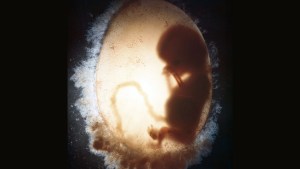A high school student, still in her junior year, has been awarded a grant of $50,000 for a discovery that might just help doctors identify people at risk of suicide. Natasha Kulviwat found that the brains of those who die by suicide tend to have elvated levels of a certain protein. Now, experts are hopeful that her research may provide a means of suicide prevention.
Business Insider reports that Kulviwat has been researching suicide since her freshman year of high school. Volunteering and attending events at suicide prevention organizations afforded her the opportunity to explore many different perspectives on suicide, but most of them agreed that research on the matter was not progressing fast enough. That’s when Kulviwat took up the mission herself.
At a Columbia University lab, Kulviwat began studying samples of the brains of those who died by suicide. After 6 months of research, she was able to identify that the samples all contained excess levels of cytokines, a type of protein that causes inflammation in response to pathogens. Cytokines can release even if there is no pathogen present, and when this happens it can cause even greater inflammation. While there are a number of maladies attributed to inflammatory cytokines, Kulviwat noticed that they can also have negative effects on a different protein of the brain, claudin-5.
Claudin-5 is an important protein that helps construct the blood-brain barrier (BBB), a thin layer of cells that protects the brain from germs or harmful substances. The BBB helps to maintain the brain’s chemical balance, but elevated levels of claudin-5 can cause a breakdown of the BBB, leading to the unrestricted flow of neurotoxic chemicals in the brain. This discovery has led to the hypothesis that elevated levels of claudin-5 in the brain could be a biomarker of suicide risk.
Peer reviews of Kulviwat’s research have called it promising, while noting that the findings must be replicated in larger samples before they can be verified. Kulviwat herself agreed with the sentiment, telling Business Insider:
“I’m going to be co-author on a National Institute of Health grant with my lab. We’re going to try to drill into this research more since the pilot study gave promising results, and then we’ll see where that takes us.”



